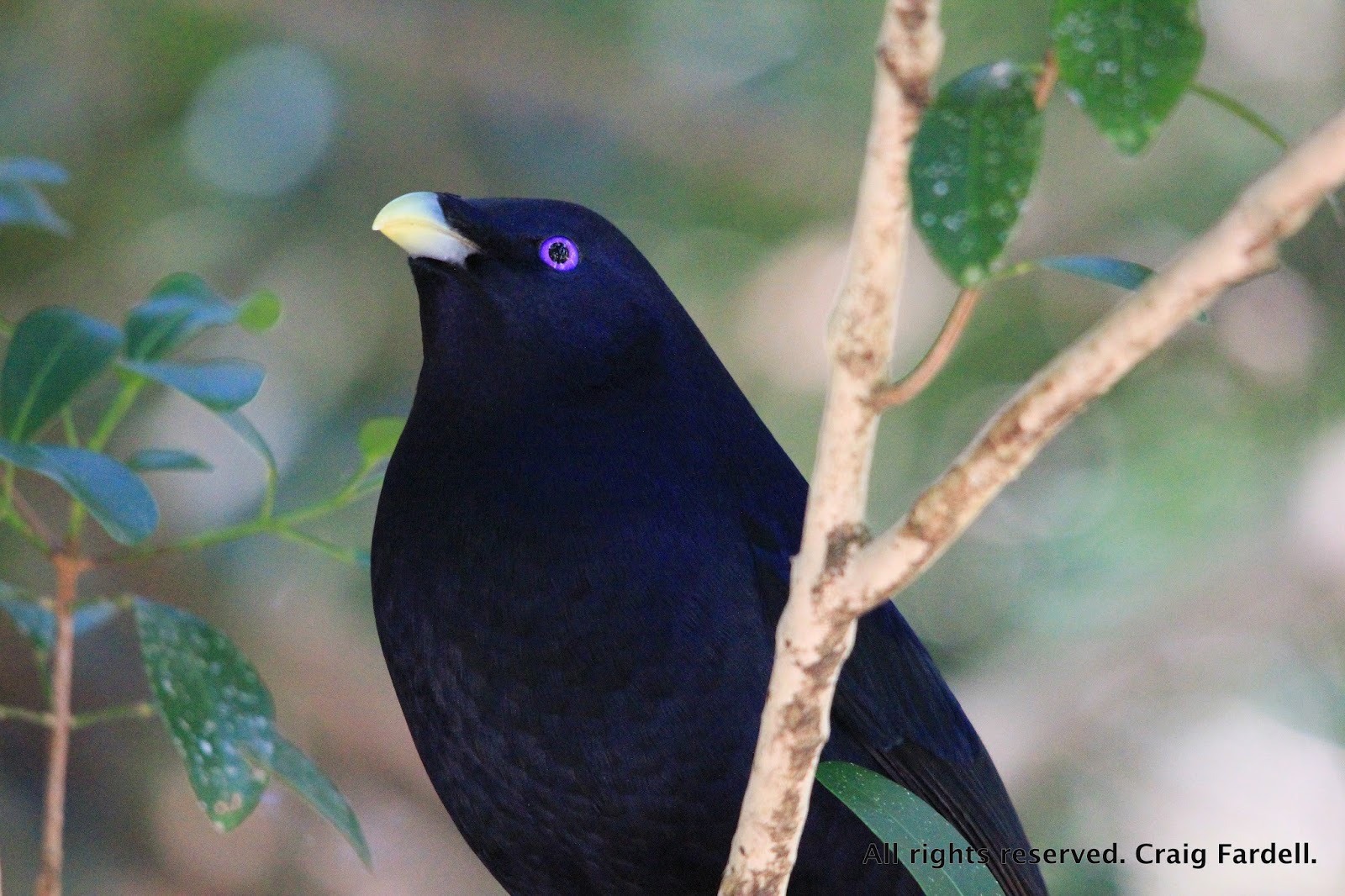What is in this dark forest? What is behind this thick barrier of shrubs, trees, vines and weeds that borders the grassy roadside like a fence? Secret beauty could be in there. Rare animals may be resting beneath ancient trees. There could be gardens of moss, struck through with rivulets of silver water, and what unusual thoughts might we encounter beneath the dense canopy of Antarctic beech?
Ten kilometres out of Dorrigo, we are standing beside this tiny patch of protected rainforest known as Junuy Juluum National Park. It covers just 945 hectares and is remnant warm temperate rainforest. It apparently provides a refuge for paradise riflebirds and sooty owls. It is a scenic backdrop to the town but does it have more depth than that? Is it scenic inside and out? It is one of those small national parks that gets overlooked; there are no tracks, no car park, one sign, no tourists.
From a distance, the forest's dense canopy has a strange, cropped evenness. The exception is one or two patches where pale, straggly eucalypts poke out into the sun. Some quick research at home has revealed that, despite once being intensely logged for red cedar and hoop pine, there is old growth Antarctic beech forest behind the sun-soaked wall of calicomas and wild raspberry beside the road. Exploration, curiosity and divergence may be all we encounter. That will probably be enough.
The name ‘Junuy Juluum’ is derived from the local Gumbaynggir language and means ‘small mountain’ and the park is centrally dominated by Mount Campion at 949 metres. We wander down a south-west heading ridge. It is scrappy at first, a lot of vines and small saplings, but the deeper we get the bigger the trees become until we stumble on a patch of solid Antarctic beech.
The forest is dry. The mosses on the gnarled thick trunks of the beech trees are brittle and pale. We continue down the slope and come to Matthews Creek which runs along the southern boundary of the park. It is a pretty stream: rocky and narrow. I am enjoying a kind of relaxed, trusting sensation; as if I am exploring a new bit of yard I have found outside my kitchen door and through the next fence. There are a couple of nice cascading sections on the stream. There are ferns, fungi and the sound of a lyrebird in the distance.
At one of the larger side gullies we head back up again and decide to try and summit Mt Campion. The contours are a bit disorienting and it takes a few checks of the map to get our bearings but we head up, and up, and encounter more Antarctic beech and higher again are two enormous carabeen trees. Their buttresses step out like walls and around about are walking stick palms and vines as thick as trees trunks. After this, the slope finally gets steep and we join onto Mt Campions eastern spur and follow a rocky rib up to the top. There is a trig point on the summit, buried behind years of tangled growth and with no view to speak of.
It's a strange little excursion this one: nothing spectacular, or remarkable, but it is pleasant and beautiful. There are a few glimpsed views. The forest is quiet but crowded with plant life. It's a cold, bleak day: overcast but not raining. For the walk back down off Mt Campion we follow a gully to the east and a couple of open slabs of rock would look nice with water running over them. We have to imagine a lot; it has been a long dry winter and before that, a long dry summer so the rainforest is lacking its usual vibrant greens.
We use the gullies as walking tracks because as we veer north again, and head back towards the car, the forest turns scrappy and thick. It is slow progress up on the hill sides. The gully we finally follow back to the road is narrow but steep-sided and quite deep. Near the road some old items of rubbish catch our eye - a hobnail boot, and a blue Vicks vapo rub glass jar that has been hauled up out of the creek probably by a satin bower bird. Walking in this park feels a bit like being a bower bird actually - us gathering up bits of information, picking little interesting bits of bush to explore, bringing home titbits and stories, a few pictures to decorate our place with and a few scavenged ideas for future walks.





No comments:
New comments are not allowed.